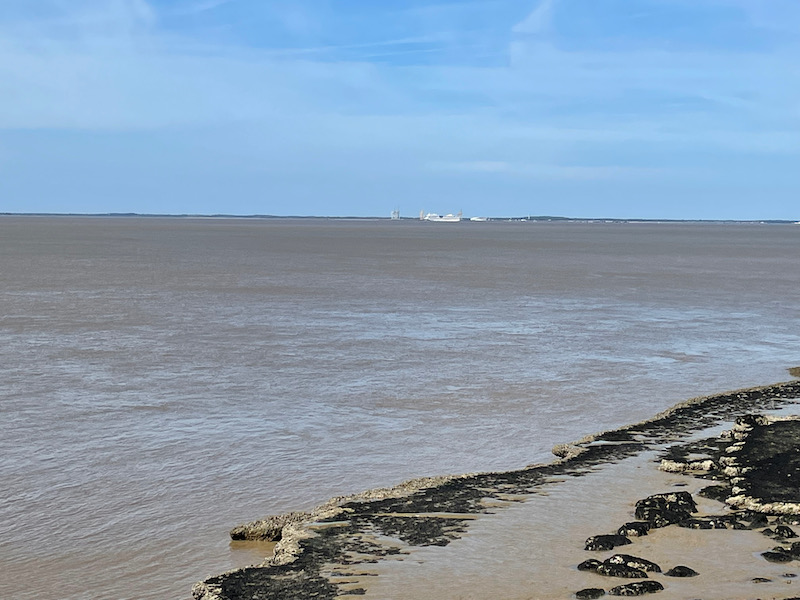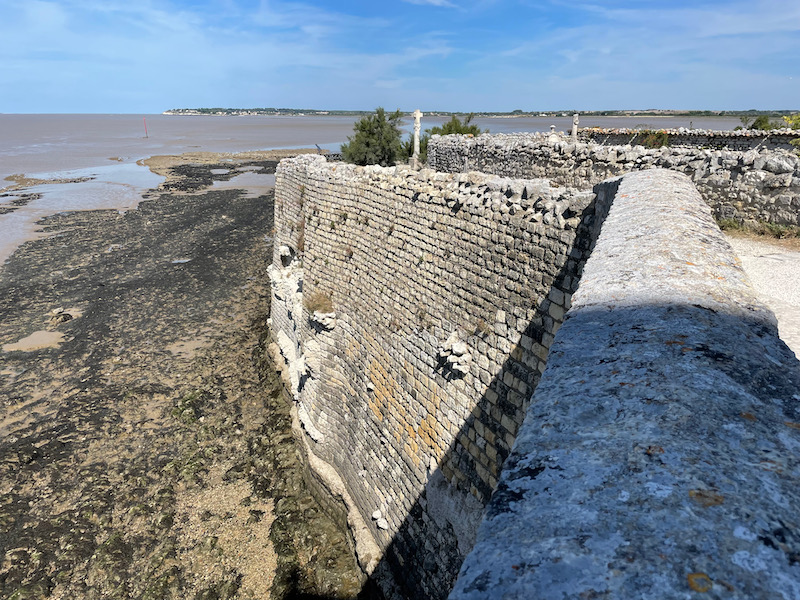Our Blog - Talmont-sur-Gironde, France
At the edge of the Gironde estuary sits the Plus Beau Village of Talmont-sur-Gironde. It is actually one of the better Plus Beau Villages, since there was lots of parking, lots of full stores, and a variety of restaurants. The town itself has little cobble-stone streets (well, maybe more like alleys) that we took from the parking around to the main site, the Sainte-Radegonde church.
The town itself is a former bastide founded by the King of England and Duke of Aquitaine Edward I in 1284. With its location on the promontory overlooking the Gironde estuary, it was once a formidable stronghold. Unfortunately, only a few sections of ramparts and part a half-ruined medieval tower remain.
It is a Romanesque-style church from the 11th-12th centuries, literally perched on a cliff. Initially a Latin cross, it is now more of a Greek cross. Here you can see how close to the cliff the left side of the church is, but the back-side of the church (the other side, not shown here) actually fell into the estuary during a violent storm when that part of the cliff collapsed.
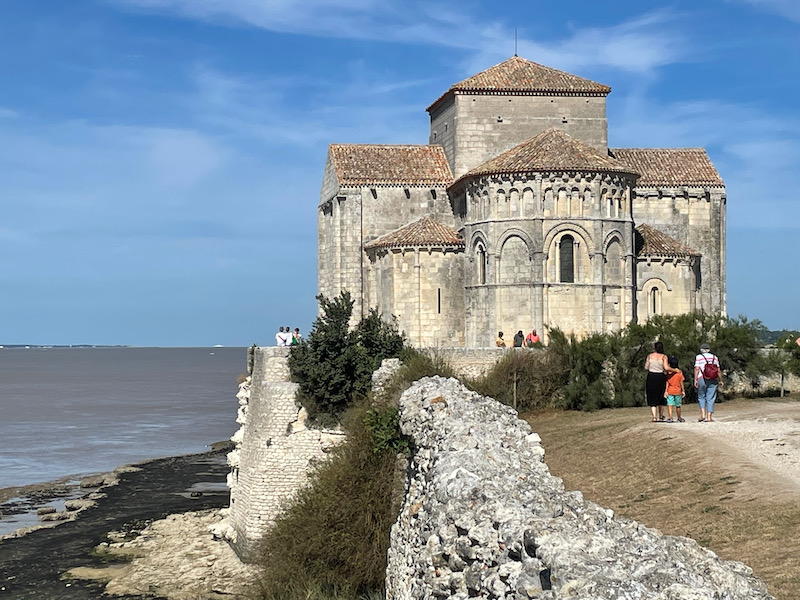
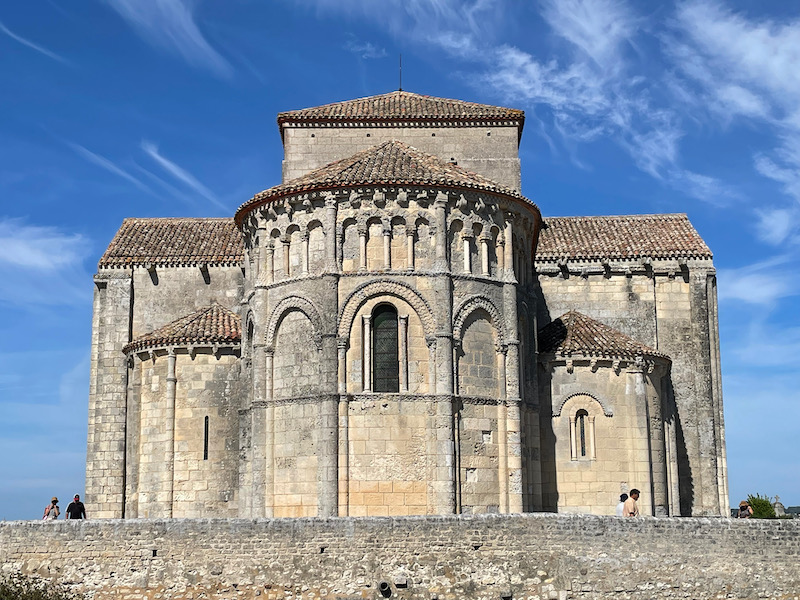
The sanctuary was built by the Benedictines of the Abbey of Saint-Jean-d'Angély. The church is unique in that the very sober interior decor shows the Cistercian influences but the rich external ornamentation on the outside of the apse and the North portal are influenced by the Cluniac (a movement that started at the Cluny Abbey). Here is that highly-decorated North portal, with multiple sculpted arches sitting on sculpted column caps.
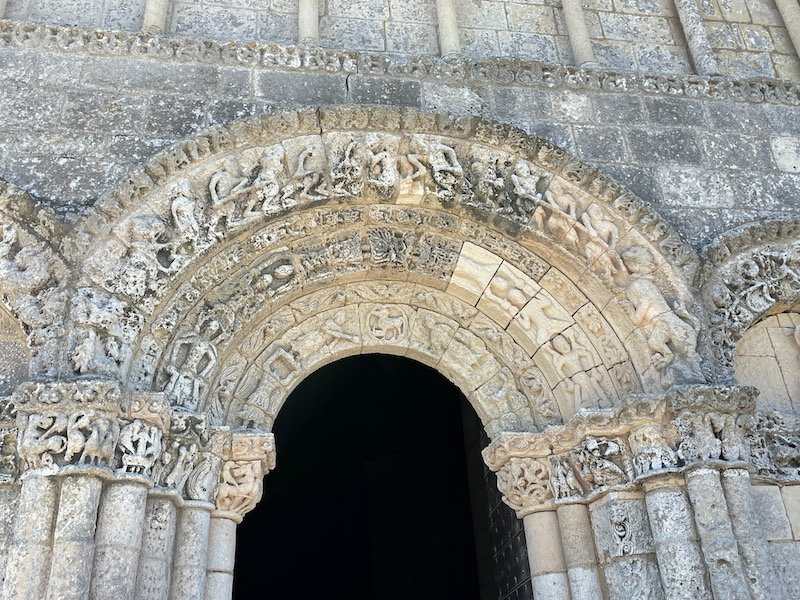
As i mentioned, the interior is quite sober .. there are 2 side chapels on either side of the main apse. The one close to the door also has a model ship hanging from the ceiling. Then the main apse, with the carved Romanesque arches. I tried to get an up-close view of the carved column caps on either side.
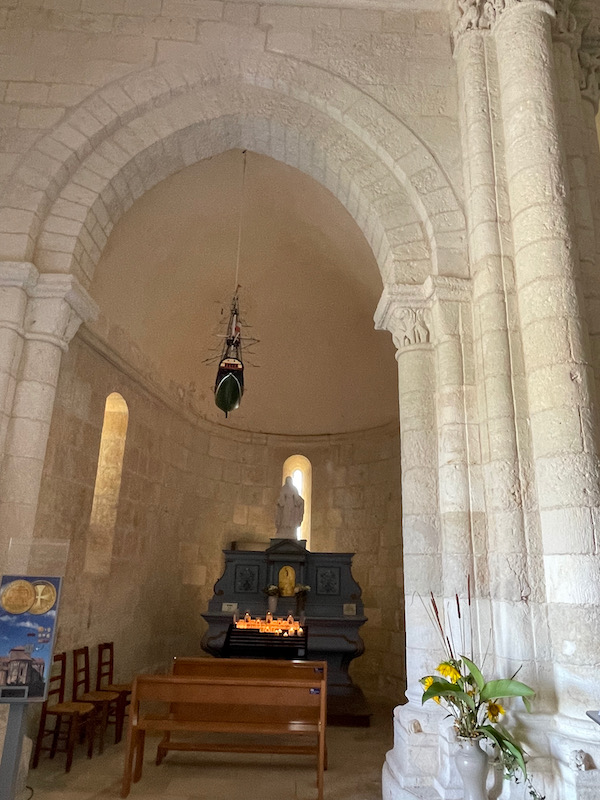
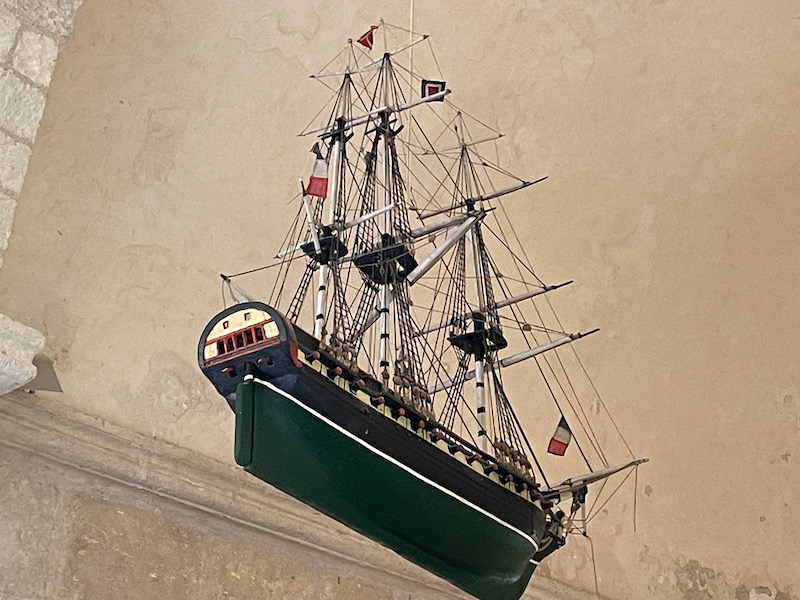
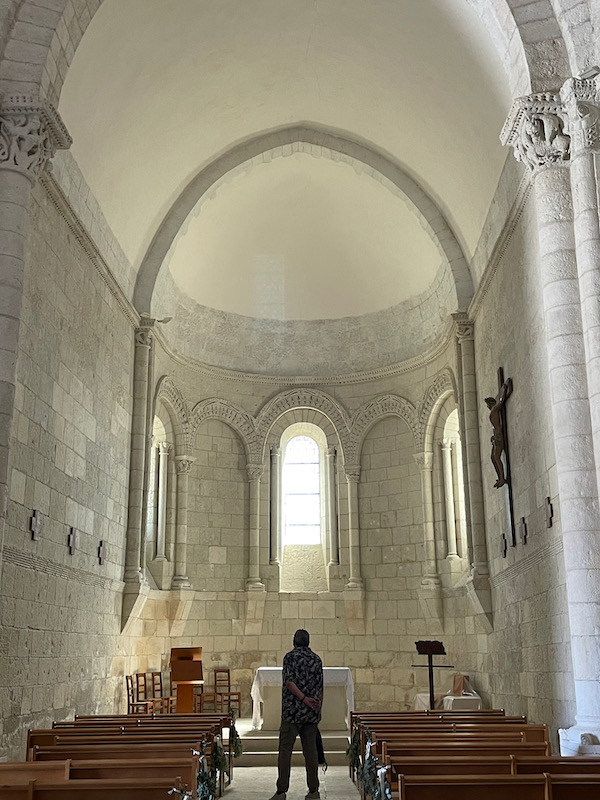
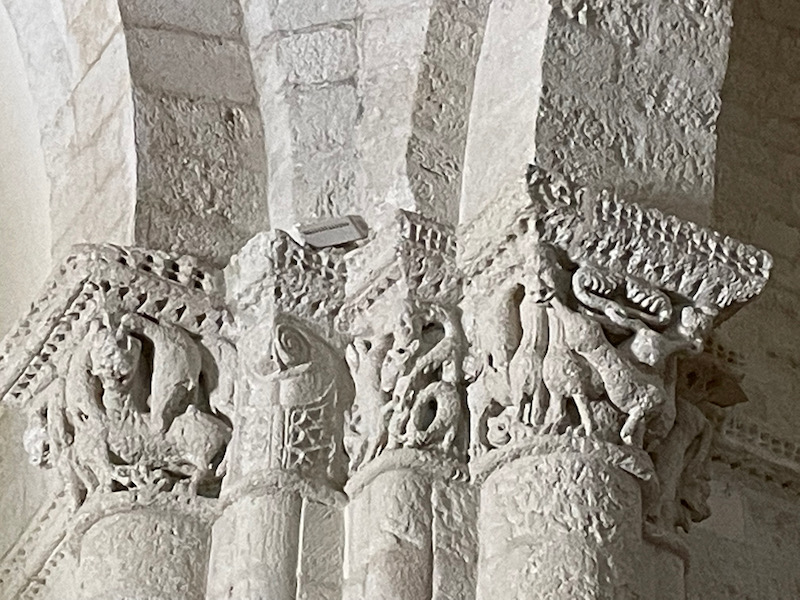
The church of Talmont is a Romanesque building dedicated to Saint Radegonde and the other side chapel has a statue of the Saint. Radegonde was born around 518, daughter of the king of the Thuringians. She was taken prisoner by the Franks in 531 when she was only 12 years old. After unsuccessfully trying to flee, she is forced to marry the son of Clovis, Clotaire, in 539. After King Clotaire has his youngest brother assassinated she leaves, becomes a nun, and founds the Notre-Dame monastery in 553. Shortly after her death in 587, she is declared a saint. The legend of her miracle was that after she became a nun, Clotaire decides he wants her to return and sends troops to find her. She flees into a field where workers had just started the process of sowing oat seeds. As she runs in, the oats immediately grow high enough to cover her.
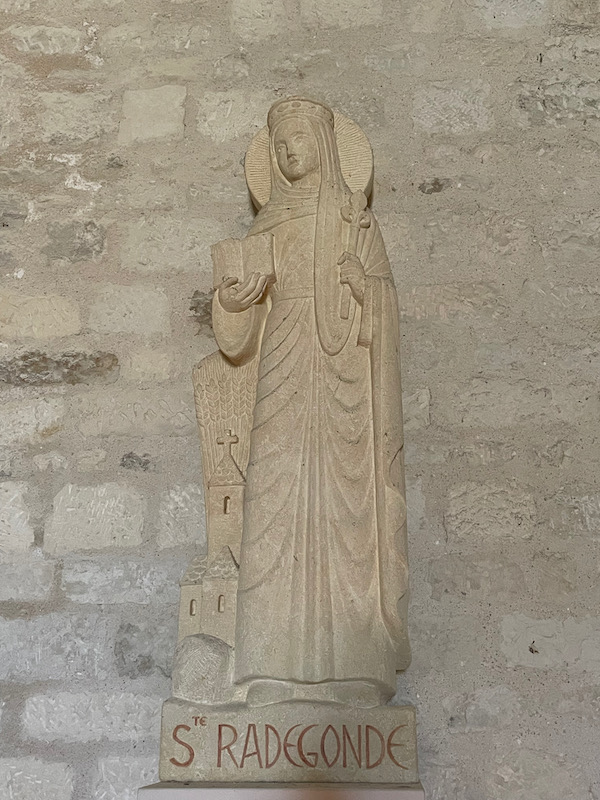
This is a picture of the backside of the church, and you can see how the stones here look different from the front. that is because this is the backside that had to be re-built when this end of the nave collapsed during the storm.
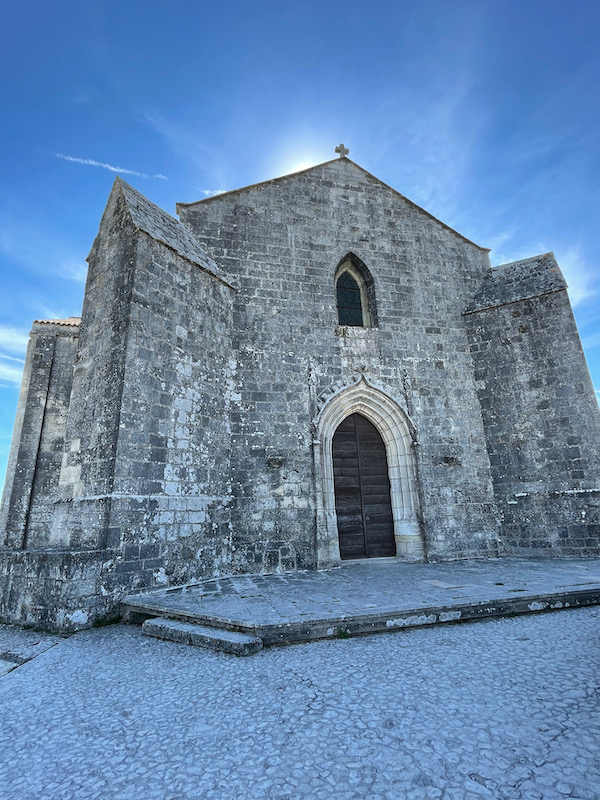
The estuary was a little brown! For some who were making the pilgrimage to Saint-Jacques-de-Compostella, this would have been on their route. One of the paths goes through Saintes, and then here, where they could catch a boat to the other side of the estuary to continue their journey.
